How We Heat Our House for Free in the Winter
Since retiring, I’ve been more determined than ever to explore different ways of living off the land sustainably. Heating our home in Connecticut is one of our largest expenses, and winter is coming. Last summer, we bought an EPA-rated wood stove for our fireplace. At $3500, the cost of the stove could have paid for a lot of fuel oil. But it can heat our entire house, and we’ve been able to gather all of our firewood for free.
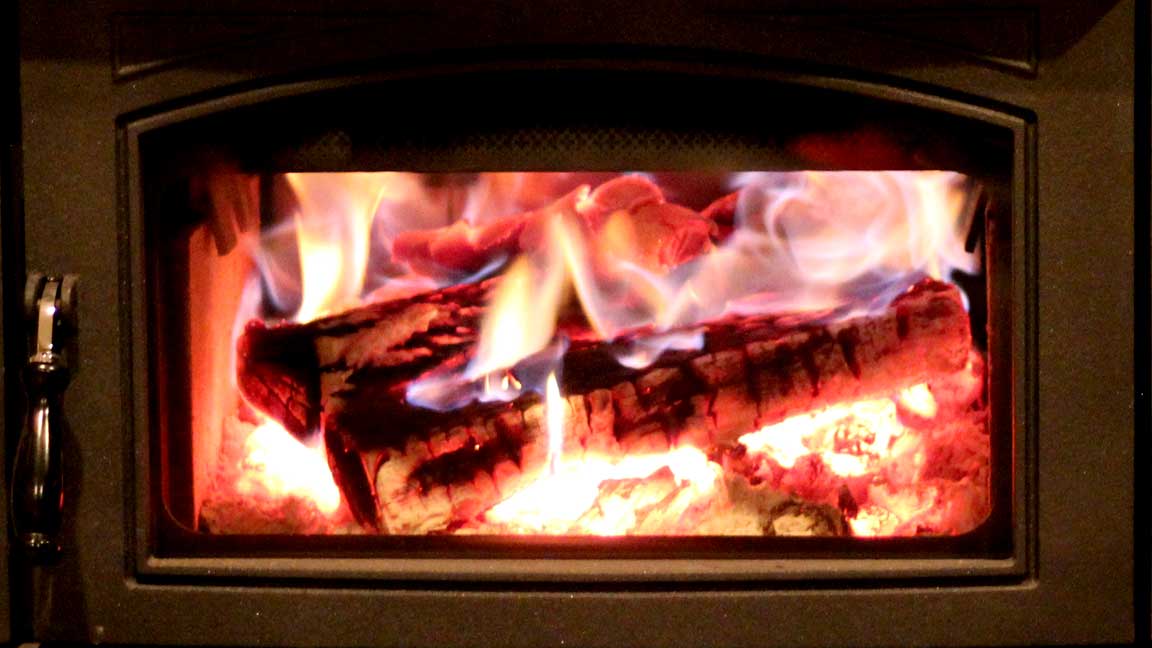
New wood stoves are extremely efficient
Our fireplace is in the basement, and without an insert, it was worthless. Anytime we made a fire, our house would fill with smoke from the poor draft. Even when we got a hot fire going, it was making our house colder by pulling all the warm air up the chimney.
In contrast, the new insert burns wood more efficiently than many oil furnaces. It’s clean burning, and puts out serious heat. There are no more smokey fires, and last year, we used a fraction of the oil that we normally use. After performing a DIY energy audit on our house, the stove has been able to heat all of it.
In the dead of winter, it easily heats the basement to 80 degrees, and with the heat rising, the rest of the house will stay around 70 degrees. It made for the most comfortable winter we’ve ever had, and the cheapest. This year with me being home, we’ll probably use even less oil since I can run the stove everyday rather than just evenings and weekends.
Getting free firewood
Last year we gathered about half the wood we used, mostly from friends who have larger plots of land, but I did also buy a couple of cords. Local tree companies have been a good source for well seasoned firewood. Of course, buying wood doesn’t have much monetary advantage over buying oil, but it’s a way to support the local economy, and it’s a sustainable resource that’s abundant in our area.
This year however, I won’t need to buy any. We’ll be able to heat our home with free wood we gathered, cut, and split.
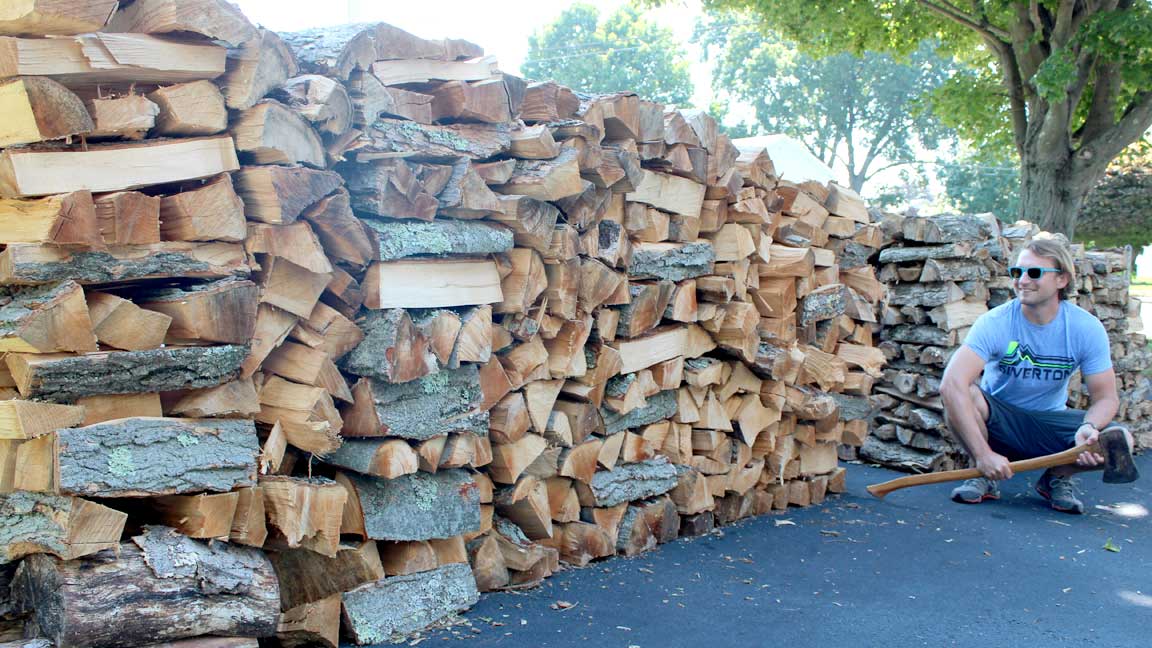 My free axe and one of our stacks.
My free axe and one of our stacks.
Before we went to Colorado, the electric company wanted to take down two maples on our property that were probably around 60 ft tall. I liked the trees, but they were close to the house, and since they were offering nearly $3,000 dollars worth of free tree work, I couldn’t say no. I only requested that they leave the wood for me. They agreed, but said it would be left in 10-ft logs.
It took them 3 days to take down both trees. After they were done, they asked if I was sure I wanted the big logs. They were bigger than I expected, but I told them to leave everything.
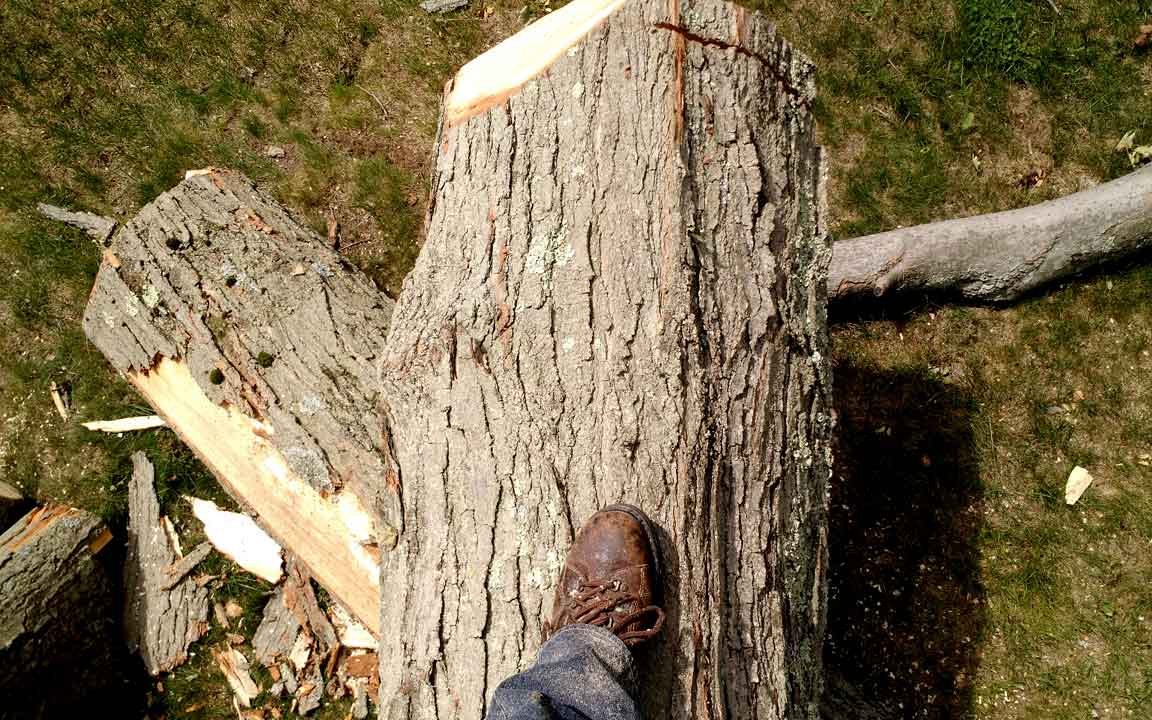
I was both nervous and excited the first night after they were done. I only had a 14″ electric chainsaw, and this was the biggest lumberjack project I had ever taken on. The next day however, I let loose my saw and made some good progress.
My favorite tools for cutting wood
Electric saws are nice because there is no need to mess with starting engines or filling gas, the power is always there. It’s also nice not having to wear ear protection or breathe in exhaust.
I figured out a few tricks, like using my 14″ blade to measure out even lengths to cut my logs. And to save money, I used old peanut oil for my bar oil. It’s easier on the environment and the only disadvantage is that it will solidify in the cold.
I also have an electric log splitter which splits surprisingly well. It’s a 5-ton that I picked up on Craigslist for $150. I find it safer and more efficient than using a maul or axe.
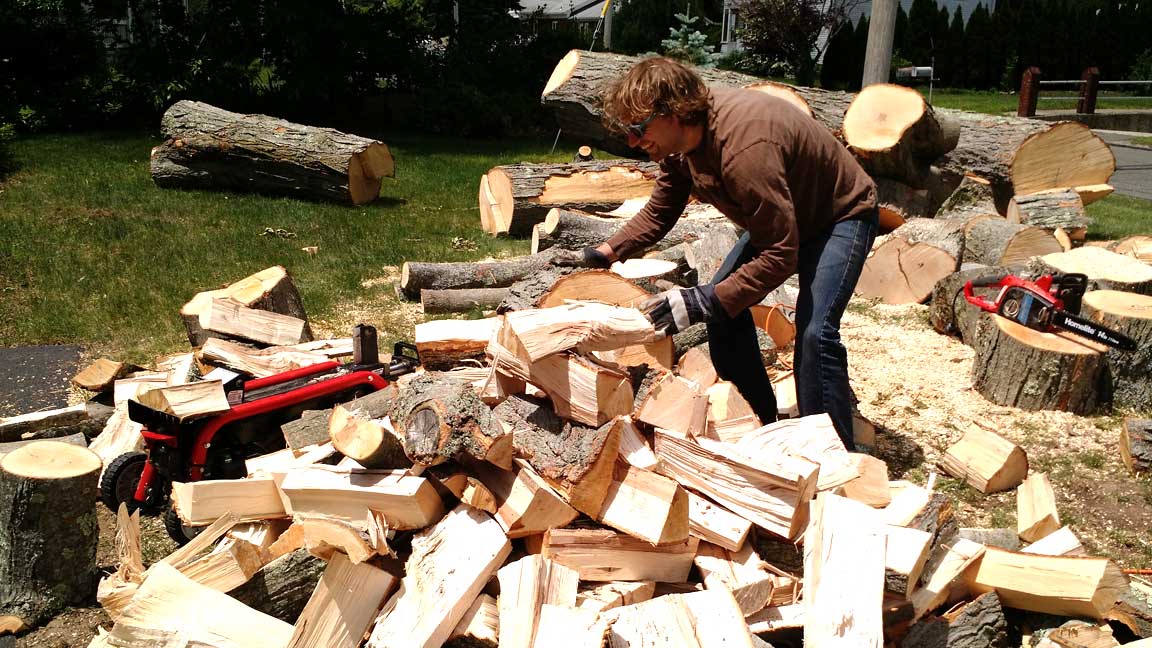 Chainsaw and splitter. I love this shit.
Chainsaw and splitter. I love this shit.
While I was admiring my handiwork over a beer, my neighbor and his friend came to have a look. His friend is also a retired engineer and a woodworking enthusiast. I could tell he was interested in some of the largest sections of maple, so I told him he could have them – it would have been a shame to just chop up such nice pieces for firewood. He accepted, and in return offered to bring his big saws over and help me cut. I love it when opportunities like this come along.
Bartering wood for help
A few days later, after I cleared all the small logs, our new friend came over. He brought two big Husqvarna saws and we went to town. Even though I still prefer the efficiency of my electric saw, I was excited to play with some saws better suited to the big logs.
We quickly cut up the rest of the wood. I was surprised to learn he also had a trick for saving money on bar oil – he uses old motor oil. While it may not be as environmentally friendly as a vegetable oil, I still think it is better because it’s already been used once. It also doesn’t solidify in the cold, and of course – it’s free.
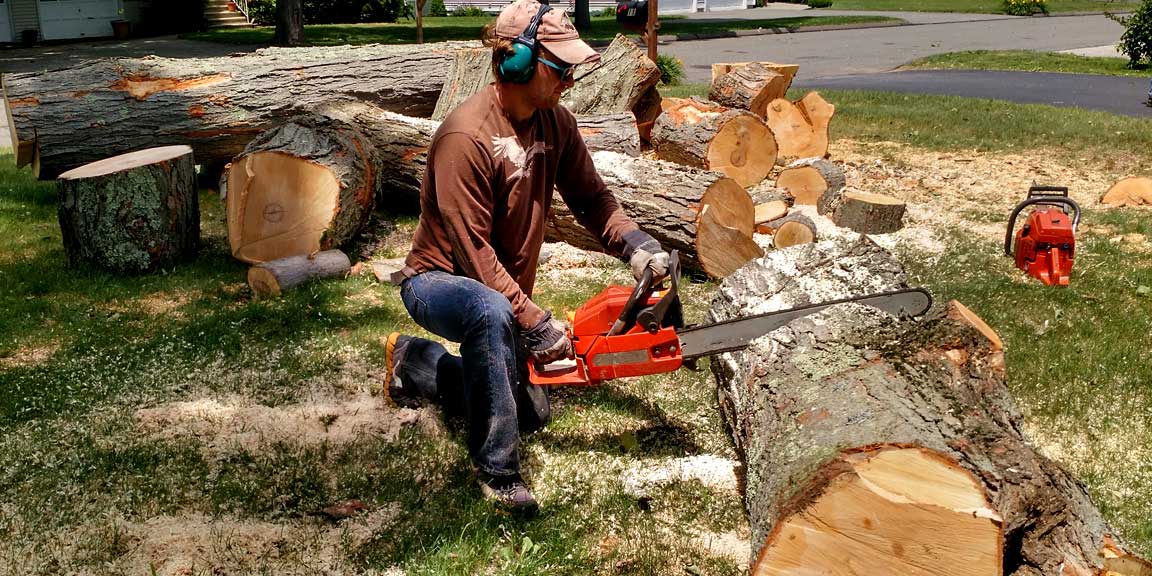 Big guns.
Big guns.
Helping out friends for more free firewood
The day after we finished cutting up the maple trees, I got a call from my skipper. He had a big elm go down in his yard, taking out his power. He wanted to know if Mrs. CK and I were interested in helping him clean it up. We packed our gear and went over right away.
The tree was tall but my electric saw was up to the task. With my new found lumberjack skills, we cleaned up his yard in one morning. He helped us load up both our cars, and after a two trips, we took home almost a full cord of wood. As a bonus, the skipper also gave me an axe, maul, sledge hammer, and wedge. I was already planning to buy them so he saved me ~$100. Did I mention I was loving these random opportunities?
I just finished splitting the last of the wood a couple weeks ago. I have more than 3 full cords of wood, split and stacked. They’re now seasoning in the nice hot weather while I keep cool in the pool. With all this free wood, the stove will quickly pay itself off, and while I normally am not a winter person, I am looking forward to watching the snow fall while sitting in front of a blazing fire, burning the wood we gathered.